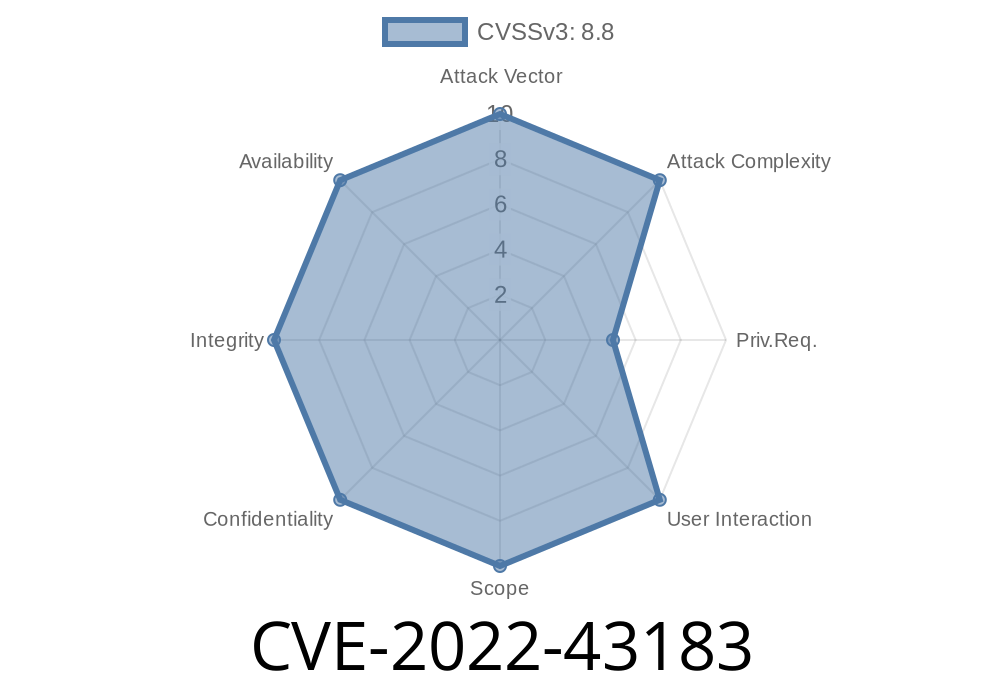A recent vulnerability identified in XXL-Job (versions before 2.3.1) has been assigned the CVE number CVE-2022-43183. The vulnerability is an instance of Server-Side Request Forgery (SSRF) that affects the /admin/controller/JobLogController.java component of the XXL-Job application. In this article, we will delve into the details of this exploit, explain how it works, and provide code snippets as examples. We will also provide links to original references for further reading.
Details of the vulnerability
The SSRF vulnerability in XXL-Job affects the /admin/controller/JobLogController.java component. The issue results from insufficient validation of user inputs, which allows an attacker to forge server-side requests that could potentially lead to unauthorized access or data exfiltration.
The vulnerable code is located in the JobLogController.java file, under the method named api. A code snippet demonstrating the SSRF vulnerability is provided below:
@RequestMapping("/api")
public ReturnT<?> api(String apiName, JobLog.ExecutorBlockParam executorBlockParam) {
// issue located here
AccessToken accessToken = AccessTokenApi.getToken(env.getProperty("xxl.job.accessToken.api"));
// ...
}
Exploiting the SSRF vulnerability
An attacker can exploit this SSRF vulnerability by crafting malicious requests to the XXL-Job server, with the target URL being the service they wish to interact with. The target server will then interpret the request as if it was generated by the XXL-Job server, potentially enabling the attacker to bypass access controls or exfiltrate sensitive data.
Due to insufficient input validation in XXL-Job, the application will happily accept the attacker's request and execute it on behalf of the attacker. For example, an attacker could target an internal service that is not directly reachable from the internet but is accessible by the XXL-Job server:
http://xxl-job-server/admin/controller/JobLogController.java?apiName=http%3A%2F%2Finternal-service%2Fsome-sensitive-data
In the above example, the XXL-Job server would send a request to http://internal-service/some-sensitive-data and retrieve the data without any authentication or authorization checks being performed.
Mitigating the vulnerability
To mitigate this vulnerability, it's crucial to upgrade XXL-Job to version 2.3.1 or later. According to the official XXL-Job GitHub repository, this version provides necessary security fixes and improved input validation to prevent SSRF attacks:
XXL-Job GitHub Repository: https://github.com/xuxueli/xxl-job
In addition to upgrading, it's a good practice to regularly review your application's security posture and ensure that proper validation and sanitization of user inputs are in place. Moreover, adopting security best practices, such as implementing a secure development lifecycle and utilizing web application firewalls, can help mitigate the risk of vulnerabilities like CVE-2022-43183.
Conclusion
In this article, we provided a detailed explanation of the SSRF vulnerability (CVE-2022-43183) affecting XXL-Job before v2.3.1, including code snippets and exploit examples. It's essential to keep your XXL-Job instances up to date with the latest security fixes and follow industry-standard security practices to mitigate the risk of such vulnerabilities. For more information, visit the official XXL-Job GitHub repository and keep an eye on the latest security advisories.
Timeline
Published on: 11/17/2022 21:15:00 UTC
Last modified on: 11/21/2022 01:57:00 UTC
